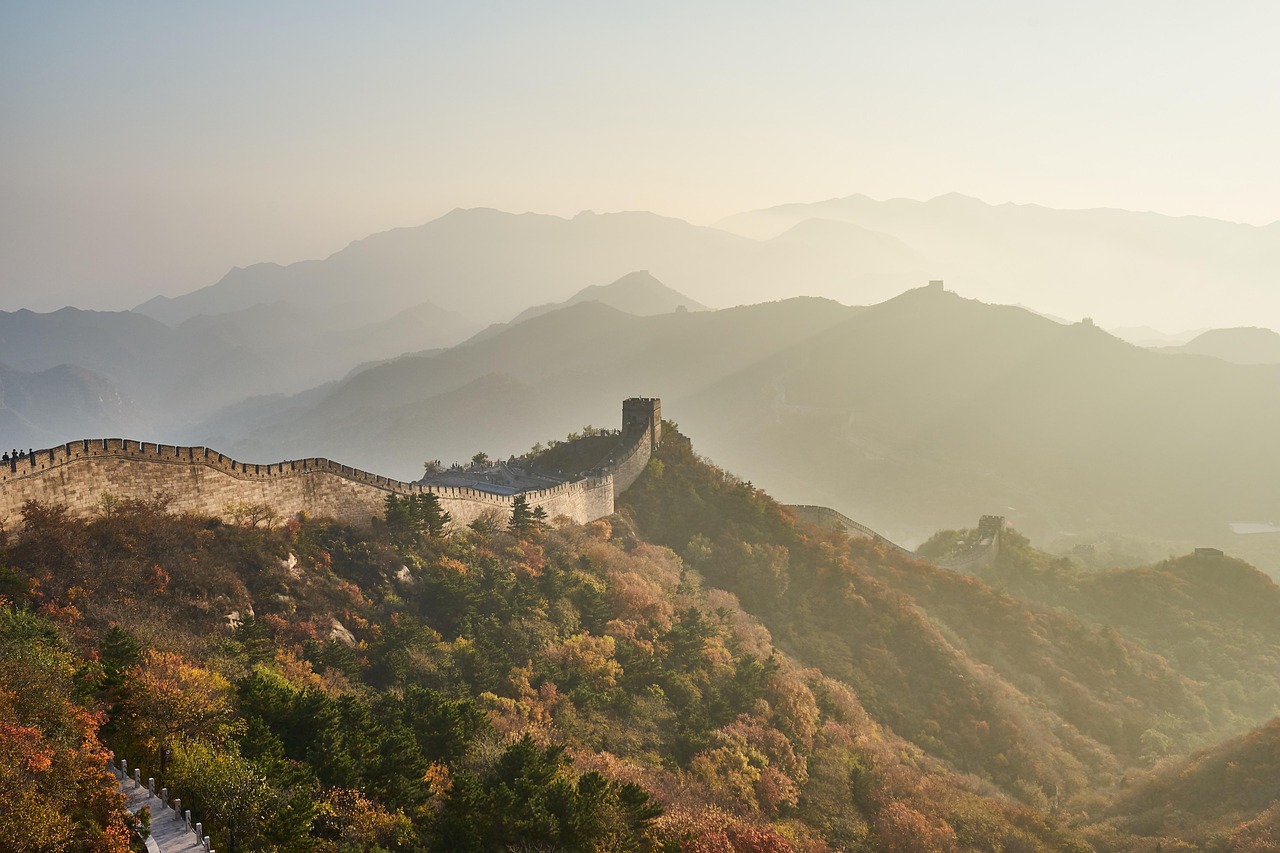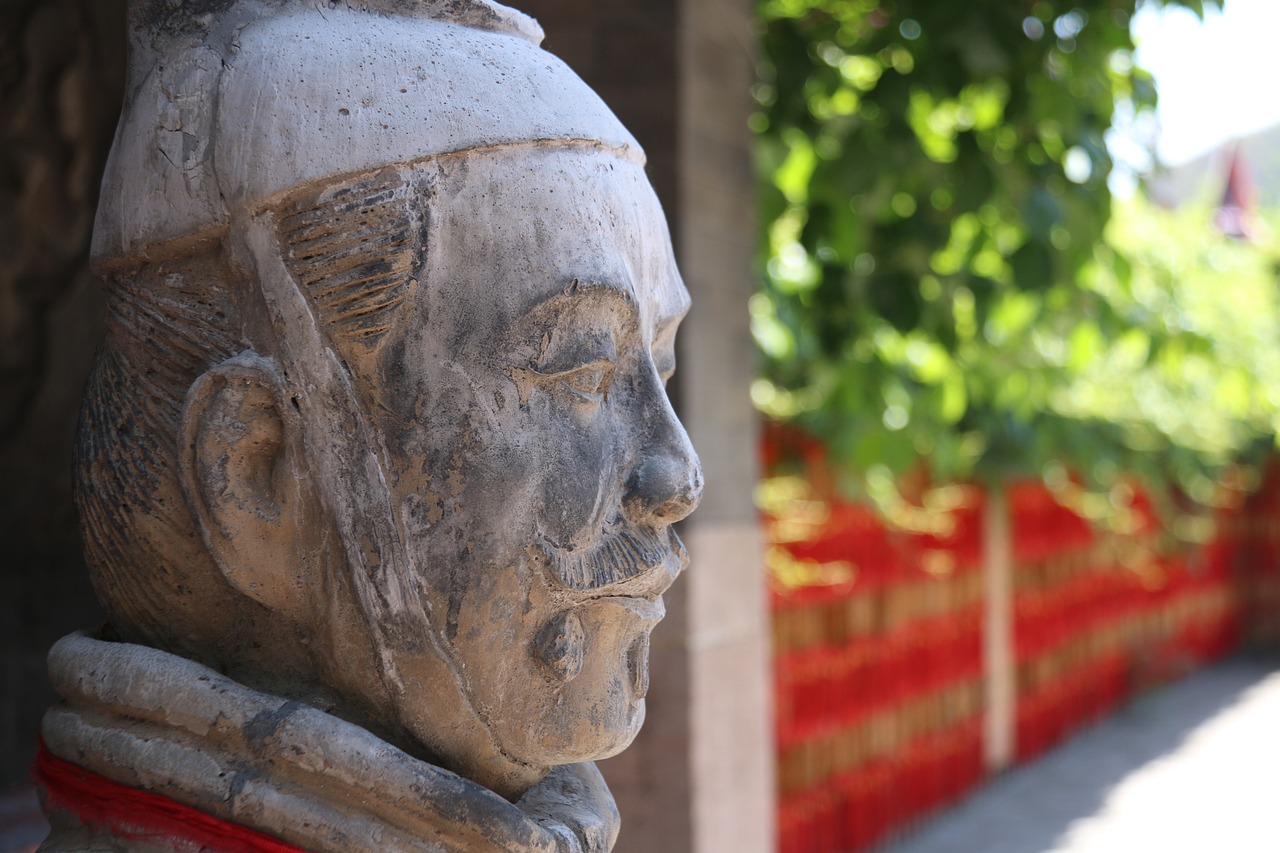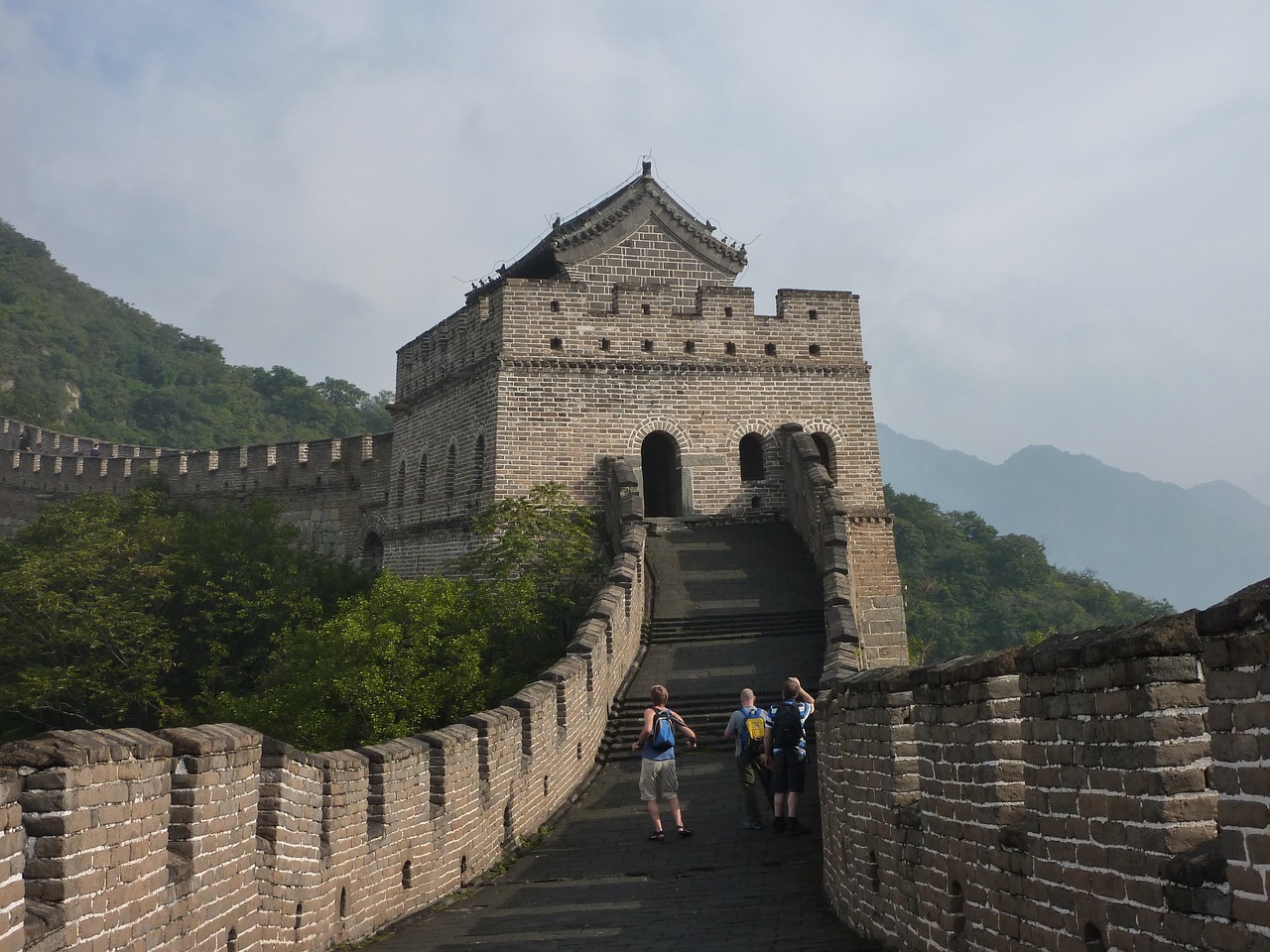The Significance of the Great Wall of China
The Great Wall of China stands as a monumental testament to ancient Chinese civilization, embodying a rich tapestry of history, culture, and architectural brilliance. Its sprawling presence across the Chinese landscape evokes a sense of wonder and admiration, drawing in visitors from all corners of the globe.

Historical Importance
The Great Wall of China is an iconic symbol of ancient Chinese civilization. Its historical, cultural, and architectural significance makes it a must-visit landmark for tourists and a subject of fascination for historians and archaeologists.
The Great Wall of China played a crucial role in protecting the Chinese states and empires against invasions and raids from nomadic groups. Its construction spanned centuries and dynasties, reflecting the evolving military strategies and technologies of the time.
Throughout history, the Great Wall served as a formidable barrier, stretching over thousands of miles and standing as a testament to the ancient Chinese civilization's commitment to defense and security. Emperors and dynasties invested immense resources and labor into fortifying the wall, demonstrating the strategic importance they placed on safeguarding their territories.
Moreover, the Great Wall not only functioned as a physical defense structure but also symbolized the unity and strength of the Chinese people. It embodied the collective effort and determination of generations to protect their homeland from external threats, showcasing a remarkable display of resilience and national pride.
The construction of the Great Wall was a monumental undertaking, involving intricate planning, skilled labor, and innovative engineering techniques. The wall's design evolved over time, incorporating advanced fortifications, watchtowers, and signal beacons to enhance its defensive capabilities against potential invaders.
As a historical marvel, the Great Wall of China stands as a living testament to the ingenuity and strategic foresight of ancient Chinese civilizations, leaving a lasting legacy that continues to inspire awe and admiration today.

Cultural Symbolism
The Great Wall of China, beyond its physical presence as a formidable barrier, embodies a rich tapestry of cultural symbolism that resonates deeply with the Chinese people. It stands not just as a structure of stone and mortar but as a powerful emblem of China's enduring spirit and national identity.
Throughout history, the Great Wall has served as a unifying symbol, bringing together diverse regions and communities under a common purpose of defense and solidarity. It symbolizes the unity of the Chinese people in the face of external threats and adversities, reflecting the collective strength and resilience ingrained in the nation's ethos.
Moreover, the Great Wall represents the unwavering perseverance and determination of the Chinese civilization. Its construction, spanning centuries and dynasties, is a testament to the relentless pursuit of fortification and protection, showcasing the commitment to safeguarding the homeland against incursions and preserving the cultural heritage for future generations.
As a cultural icon, the Great Wall embodies the values of perseverance, sacrifice, and national pride. It serves as a reminder of the sacrifices made by generations past to ensure the safety and prosperity of the nation, instilling a sense of reverence and respect for the historical legacy it represents.
Furthermore, the Great Wall's cultural symbolism extends beyond its physical boundaries, permeating art, literature, and folklore. It has inspired countless works of creativity and imagination, becoming a muse for artists and storytellers seeking to capture its grandeur and significance in their expressions.
In essence, the Great Wall of China is not merely a structure of defense but a living symbol of the enduring spirit and cultural richness of the Chinese civilization. Its significance transcends time and space, resonating with people around the world as a testament to human ingenuity, resilience, and the power of unity.

Architectural Marvel
The Great Wall of China is an iconic symbol of ancient Chinese civilization. Its historical, cultural, and architectural significance makes it a must-visit landmark for tourists and a subject of fascination for historians and archaeologists.
The Great Wall of China stands as a testament to the remarkable architectural prowess of ancient Chinese builders. Spanning over 13,000 miles, this colossal structure is a marvel of engineering, showcasing the ingenuity and craftsmanship of its creators.
The wall's construction involved a sophisticated blend of materials, including bricks, stone, wood, and earth, meticulously crafted to withstand the test of time. The strategic placement of watchtowers and fortifications along its length demonstrates the meticulous planning and defensive strategies employed by the builders.
Moreover, the Great Wall's architectural design seamlessly integrates with the natural landscape, following the contours of rugged mountains and steep valleys. The harmonious blend of man-made structures with the surrounding environment creates a breathtaking sight that leaves visitors in awe of the ancient builders' vision and skill.
Each section of the Great Wall reflects the technological advancements and architectural styles of the respective dynasties that contributed to its construction. From the imposing stone fortifications of the Ming Dynasty to the earthen ramparts of earlier periods, the wall's diverse architectural features offer a glimpse into China's rich history and cultural heritage.
Visitors marvel at the sheer scale and complexity of the Great Wall, marveling at the intricate details and structural integrity that have withstood centuries of wear and tear. The architectural grandeur of this ancient wonder continues to inspire awe and admiration, solidifying its reputation as a true marvel of human ingenuity.
- Is the Great Wall of China visible from space? - Contrary to popular belief, the Great Wall of China is not easily visible from space with the naked eye. It blends into the natural landscape and is not as prominent as depicted in some myths.
- How long did it take to build the Great Wall of China? - The construction of the Great Wall spanned several dynasties over centuries, with different sections being built and rebuilt over time. The exact duration of its construction is difficult to pinpoint due to the continuous efforts throughout history.
- Can visitors walk on the Great Wall of China? - Yes, visitors can walk on certain sections of the Great Wall that are open to the public. These sections offer unique experiences and breathtaking views of the surrounding landscape.
- What is the best time to visit the Great Wall of China? - The best time to visit the Great Wall is during the spring and autumn months when the weather is mild and the crowds are smaller. Avoiding the peak summer and winter seasons can enhance your overall experience.

Tourist Attraction
The Great Wall of China is an iconic symbol of ancient Chinese civilization. Its historical, cultural, and architectural significance makes it a must-visit landmark for tourists and a subject of fascination for historians and archaeologists.
The Great Wall of China played a crucial role in protecting the Chinese states and empires against invasions and raids from nomadic groups. Its construction spanned centuries and dynasties, reflecting the evolving military strategies and technologies of the time.
As a symbol of China's strength and resilience, the Great Wall holds immense cultural significance for the Chinese people. It represents unity, perseverance, and the enduring spirit of the nation throughout its long and storied history.
The architectural grandeur of the Great Wall showcases the ingenuity and craftsmanship of ancient Chinese builders. Its massive stone fortifications, watchtowers, and defensive structures stand as a testament to the engineering prowess of the past civilizations.
Today, the Great Wall of China is a top tourist destination, attracting millions of visitors from around the world. Its scenic beauty, historical allure, and panoramic views make it a popular site for exploration and photography.
Preserving the Great Wall is a significant challenge due to natural erosion, human activities, and lack of maintenance. Conservation efforts aim to protect this UNESCO World Heritage site for future generations and maintain its integrity and historical value.
The Great Wall of China is shrouded in myths and legends that have been passed down through generations. Stories of its construction, mystical powers, and heroic feats add to the allure and mystique surrounding this ancient wonder.
The Great Wall's tourism and cultural significance contribute to China's economy by generating revenue, creating jobs, and boosting local businesses. Its iconic status as a global landmark also enhances China's international reputation and tourism industry.
Recognized as one of the Seven Wonders of the World, the Great Wall of China holds a special place in the hearts and minds of people worldwide. Its enduring legacy and monumental scale continue to captivate audiences and inspire awe.
Stay tuned for some common questions and answers about the Great Wall of China!

Preservation Efforts
The preservation of the Great Wall of China is a monumental task that requires ongoing dedication and resources. Due to its immense length and age, the Great Wall faces numerous challenges that threaten its integrity and historical value. Natural erosion, environmental factors, and human activities all contribute to the deterioration of this ancient wonder.
Conservation efforts involve a combination of proactive measures to protect the Great Wall for future generations. These include regular maintenance, repair of damaged sections, and the implementation of sustainable tourism practices to minimize the impact of visitors on the structure. Additionally, research and monitoring are essential to understand the ongoing threats and develop effective preservation strategies.
One of the key initiatives in preserving the Great Wall is the designation of certain sections as UNESCO World Heritage sites. This recognition helps raise awareness of the cultural and historical significance of the Great Wall and provides international support for conservation efforts. Local communities and organizations also play a crucial role in safeguarding the Great Wall, contributing their knowledge and resources to ensure its long-term survival.
Furthermore, educational programs and outreach efforts aim to increase public awareness about the importance of preserving the Great Wall. By engaging the community and fostering a sense of ownership and pride in this iconic landmark, conservationists hope to inspire future generations to cherish and protect this architectural marvel.

Myth and Legend
The Great Wall of China is not just a physical structure but a canvas painted with myths and legends that have stood the test of time. One of the most famous legends surrounding the Great Wall is the tale of Meng Jiangnu, a young woman whose husband was forced to work on the wall. Her unyielding love and grief were said to have caused a section of the wall to collapse, revealing her husband's bones.
Another intriguing myth is the story of the "Watchman of the Great Wall." It is believed that the souls of soldiers who died while guarding the wall still roam the fortifications, protecting it from harm. This ghostly presence adds an air of mystery and intrigue to the already awe-inspiring structure.
Legends also speak of the Great Wall's supernatural powers, with tales of dragons that once inhabited the mountains and valleys surrounding the wall. These mythical creatures were said to bring luck and protection to those who crossed the wall, adding a touch of magic to its already formidable presence.
Despite the passage of time, these myths and legends continue to captivate visitors and locals alike, weaving a rich tapestry of folklore and storytelling around the Great Wall of China. They serve as a reminder of the enduring power of imagination and the deep cultural roots that have shaped this iconic monument.

Economic Impact
The economic impact of the Great Wall of China is profound, extending beyond its historical and cultural significance. As a major tourist attraction, the Great Wall contributes significantly to China's economy through revenue generation and job creation. Millions of visitors flock to the site each year, boosting the tourism industry and supporting local businesses in the surrounding areas.
Moreover, the iconic status of the Great Wall as a global landmark enhances China's international reputation and appeal as a tourist destination. The influx of tourists not only brings in revenue from entrance fees and souvenir sales but also stimulates growth in related industries such as hospitality, transportation, and retail.
Conservation efforts and maintenance of the Great Wall also create employment opportunities for local communities, further bolstering the economic impact of this ancient marvel. The preservation projects not only aim to protect the structural integrity of the wall but also contribute to the development of sustainable tourism practices that benefit both the environment and the economy.

Global Recognition
The Great Wall of China is a monumental structure that has gained as one of the Seven Wonders of the World. Its sheer size, historical significance, and architectural marvel have captured the imagination of people around the globe. The Great Wall stands as a testament to human ingenuity and perseverance, drawing visitors from all corners of the world to witness its grandeur firsthand.
Frequently Asked Questions
- What is the historical significance of the Great Wall of China?
The Great Wall of China has a rich historical importance as it served as a vital defense structure against invasions and raids from nomadic groups throughout various Chinese dynasties.
- Why is the Great Wall considered a cultural symbol?
The Great Wall symbolizes China's strength, unity, and resilience, reflecting the enduring spirit of the Chinese nation and holding immense cultural significance for the people.
- What makes the Great Wall an architectural marvel?
The architectural grandeur of the Great Wall showcases the remarkable craftsmanship and engineering prowess of ancient Chinese builders, with its massive stone fortifications and defensive structures.
- Why is the Great Wall a popular tourist attraction?
The Great Wall of China attracts millions of visitors worldwide due to its scenic beauty, historical allure, and panoramic views, making it a top destination for exploration and photography.
- How are preservation efforts being carried out for the Great Wall?
Preservation efforts aim to protect the Great Wall from natural erosion, human activities, and lack of maintenance, ensuring its integrity as a UNESCO World Heritage site for future generations.
- What are some myths and legends associated with the Great Wall?
The Great Wall of China is surrounded by myths and legends, including stories of its construction, mystical powers, and heroic feats, adding to its allure and mystique.
- What economic impact does the Great Wall have?
The Great Wall's tourism and cultural significance contribute to China's economy by generating revenue, creating jobs, and boosting local businesses, enhancing China's international reputation.
- Why is the Great Wall globally recognized as a wonder?
Recognized as one of the Seven Wonders of the World, the Great Wall of China captivates audiences worldwide with its monumental scale, enduring legacy, and awe-inspiring presence.



















